The Coke sign in Kings Cross
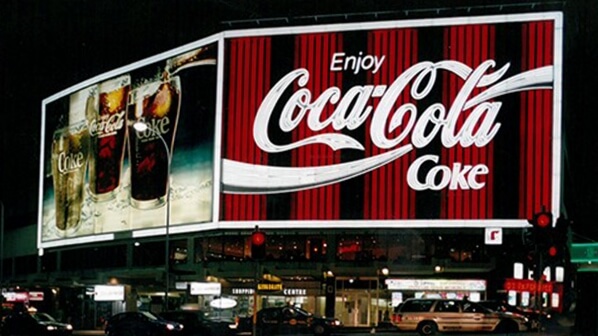
The Kings Cross Coca-Cola sign, located above the intersection of William Street and Darlinghurst Road, is a familiar landmark on the Sydney skyline. The sign is often referred to as The Gateway to the Cross because it is prominently visible from all of William Street, which is the principal road leading to Kings Cross from the Sydney CBD. The billboard - 41 metres long and 13 metres high - is made up of two parts: on the right, the famous red and white neon sign, and on the left the more modern, flex-faced sign. It also has 800 fluorescent lamps that are concealed behind reflectors that allow the billboard to project thirteen different patterns. In 2008 Coca-Cola Amatil purchased the iconic sign after leasing it from 1976. In 2017, after upgrading the sign (making it more energy efficient and allowing it to change colour, making it the single largest controllable LED sign in the Southern Hemisphere), the company auctioned off the vintage C-O-K-E letters to raise over $100,000 for the local Wayside Chapel.
The Dog on the Tuckerbox
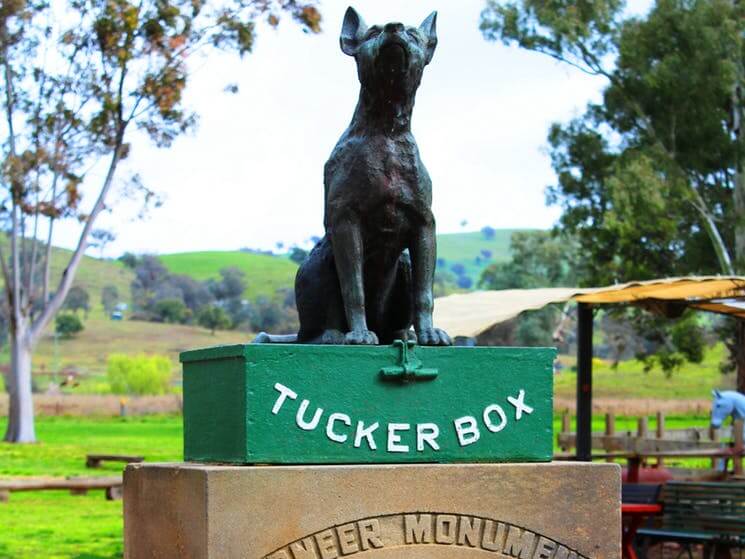
The Dog on the Tuckerbox is an Australian historical monument and tourist attraction, located at Snake Gully, five miles from Gundagai. It was inspired from a time when the early colonial settlers followed explorers searching for the source of the Murrumbidgee River around 1830-50. Many of them made homes in the Gundagai district and a popular past time in those days was reciting bush poetry. The statue was inspired by a bullock drover's poem, Bullocky Bill, which humorously describes a series of misfortunes faced by the drover, culminating in his food being spoiled by his dog who sits either in or on his tuckerbox. The dog section of the monument was cast in bronze and its base sculpted by a local stonemason. It was unveiled by the then Prime Minister of Australia Joseph Lyons on 28 November 1932.
Sign(s) for the town of Yass
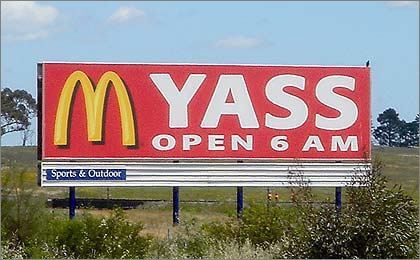
The results of any Google search for “funny signs” will inevitably include a photo of the McDonald’s billboard in the town of Yass (see above – geddit?) More recently, another of the town’s signs received international fame because a mini-episode of the hugely popular Netflix program, Queer Eye was filmed there. Local tourism has the town name's similarity to a popular expression within the LGBTQI community — 'Yass Queen' to thank for a recent boost in tourism.
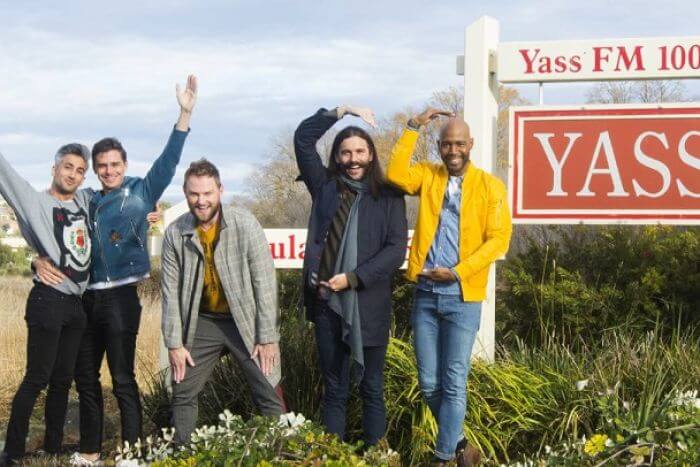
The Big Banana
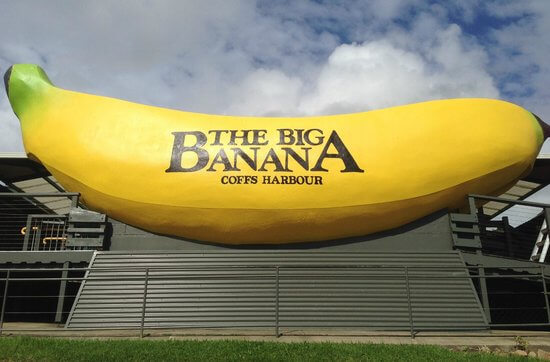
The Big Banana is a tourist attraction and amusement park in the city of Coffs Harbour, New South Wales. The grounds of the park are set in a banana plantation and its standout feature is a giant homage to the yellow fruit that people can walk through. Built in 1964, it was one of the first of Australia's many Big Things (the Big Guitar, Big Prawn, Big Bundy Bottle, Big Ugg Boots are just some of the others building their own iconic statuses). In keeping with the plantation theme, banana-related products are shown or sold in the park which also boasts a souvenir shop and restaurant. In 2011, international site, Huffington Post included the Big Banana in their list of the "Top 10 Pieces of Folly Architecture”. In peak tourist season it’s estimated that the Big Banana receives around 150,000 visitors.
“Beware of ...” signs
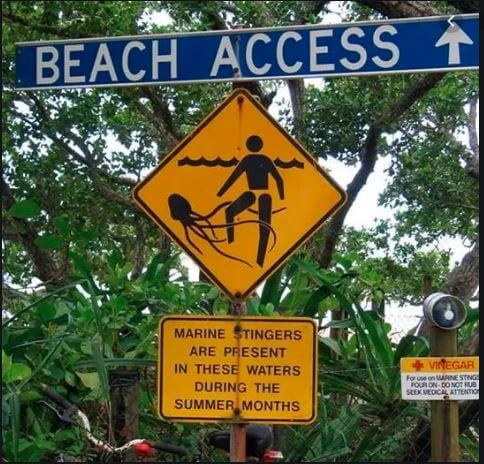
If you travel around Australia and believe the signs, you could be forgiven for wondering why anyone would ever want to visit – let alone live – here. Some are official and some have been artistically altered by visitors, but all warn of the horrible dangers of our flora and fauna – only in Australia!
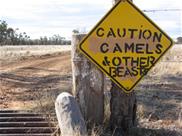
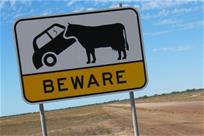
Eternity
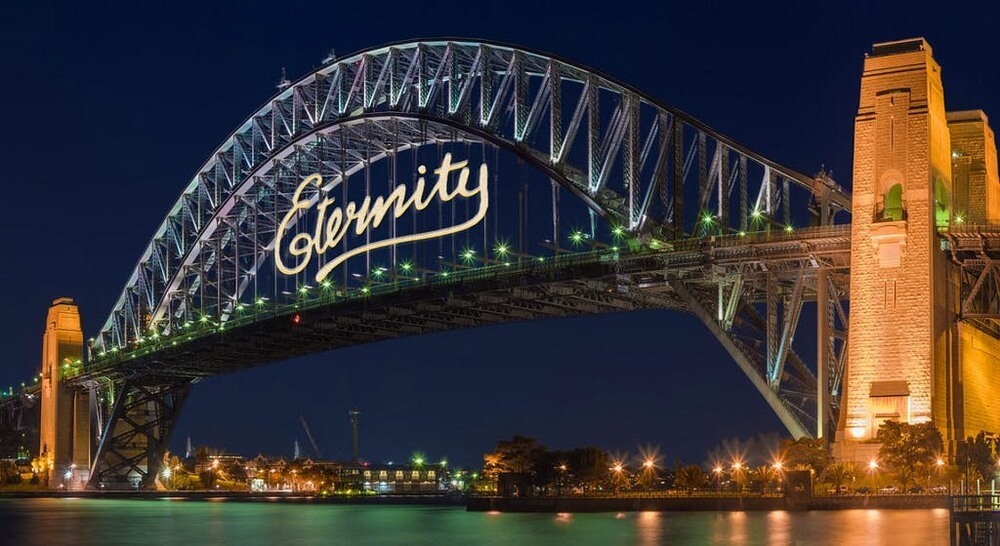
The word Eternity was a graffiti tag written in chalk in a distinct copperplate style of handwriting on the streets of Sydney over a 35-year period from 1932 to 1967. For many years the person behind the tag remained a mystery until a newspaper article in 1956 revealed it was the handy work of Arthur Stace. Arthur was a former soldier who had fallen on hard times until the 1940s when he became a devout Christian and turned his life around. Following his conversion up until his death in the 1960s, he walked the streets of Sydney at night writing the word Eternity on walls and footpaths. Only two original Eternity inscriptions are known to still exist - one on a piece of cardboard Stace gave to another member of his church, and can be found at the National Museum of Australia in Canberra. The other remains in situ inside the bell of the Sydney General Post Office clock tower. As part of the fireworks on Sydney Harbour to mark New Year's Day of the year 2000, the graffito "Eternity" was illuminated on the Sydney Harbour Bridge and appeared again later that year as part of the Sydney 2000 Olympics Opening Ceremony.
The Skipping Girl sign
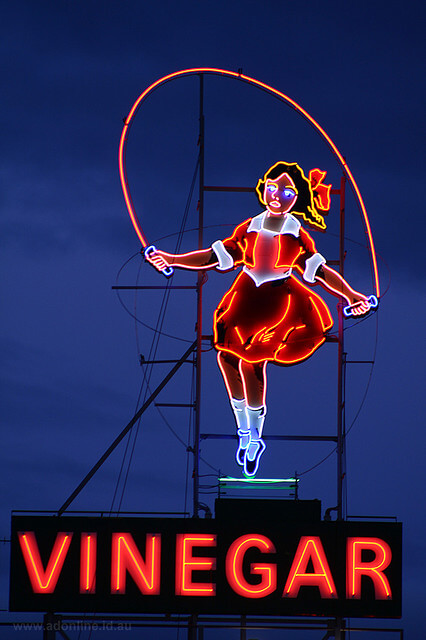
The Skipping Girl Sign or Skipping Girl Vinegar Sign – widely referred to as ‘Little Audrey’ - is an animated neon sign in the inner suburb of Abbotsford, Melbourne. It is thought to have been the first animated neon sign in Australia. First erected in 1936, the sign was an advertisement for the Skipping Girl Vinegar brand and was placed on top of the factory at 627 Victoria Street, Abbotsford. When it was removed in 1968, a public outcry resulted in the creation of a reproduction which was placed on display on a nearby factory at 651 Victoria Street in 1970.
Please do not climb Uluru
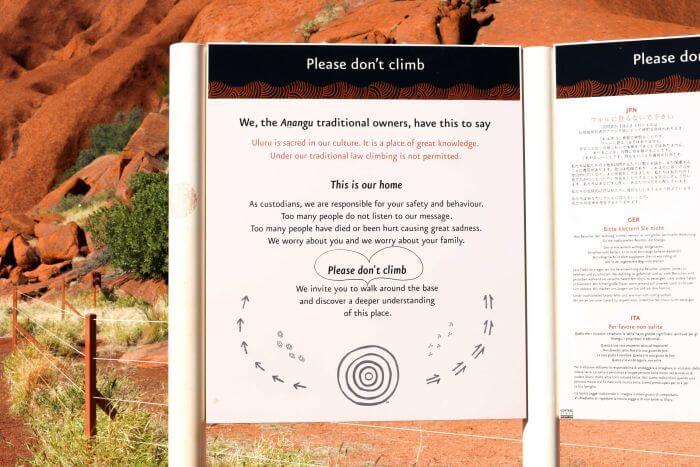
In 2017, a sign was placed at the base of Australia’s treasured natural feature and international tourist attraction, Uluru by the Uluru-Kata Tjuta National Park requesting people not climb Uluru. The reasons for the request include safety concerns, fears of environmental degradation, and issues of cultural sensitivity: the Anangu community, who serve as the site’s traditional owners, wish to preserve the site’s spiritual significance. It has pre-empted an official ban on climbing the rock that comes into effect in October 2019.
Steep Point sign

Although not nearly as well known as nearby attraction Little Creatures Brewing Co., Steep Point sign is included in holiday photos of the most adventurous to visit Western Australia. Steep Point is the most westerly point on mainland Australia. The Dutch seafarer William de Vlamingh named ‘Steyle Hock’ (Steep Point) in 1697 when anchored off the cliffs near the southern tip of Dirk Hartog Island. Getting there is by four-wheel drive vehicles only, as tracks to the point are through sand dunes and the closest sealed road is 200 kilometres away.